市场资讯及洞察
%20(1).jpg)
亚洲
北京时间早间7时,韩国将公布三季度GDP初值,市场预计经济增速或继续温和修复。与此同时,深圳成为今日全球科技与产业创新的焦点:2025世界数字城市大会、深圳国际全触与显示展、广东国际机器人及智能装备发展大会及2025金融街论坛年会同时开幕,议题涵盖智慧城市、制造业升级与数字金融生态,体现中国在新质生产力领域的持续布局。
欧洲
欧股开盘前,瑞士制药巨头诺华制药将发布季度业绩报告。德国经济和能源部长莱歇将在16:30发表讲话,欧洲央行将于17:00发布CPI预期及贷款调查报告,随后管委Panetta讲话。投资者普遍关注欧央行对通胀路径及信贷环境的最新判断。
美国
隔夜美股再度全线走强。标普500指数收涨1.23%至6875.16点,道琼斯指数涨0.71%至47544.59点,纳斯达克综合指数涨1.86%,报23637.46点,创历史新高。科技与半导体板块表现突出,纳指科技指数涨超2.3%,半导体指数涨超2.7%。分析人士指出,AI主题回暖及企业盈利超预期成为推动主要股指连续三日创新高的主因。
美股盘前,PayPal、联合健康、NextEra Energy、UPS及康宁公司等将陆续发布业绩报告;盘后,Booking、艺电(EA)、Visa与希捷科技接力亮相。与此同时,英伟达年度GTC大会时间待定,CEO黄仁勋预计将公布最新AI战略,市场期待公司在生成式人工智能与高性能计算领域的新突破。
企业与贸易
据知情人士透露,亚马逊将启动公司历史上最大规模裁员,预计削减约3万个企业部门岗位,占企业员工总数近10%。此次调整涉及云计算等核心业务,反映出科技巨头在AI投资与成本控制之间的重新平衡。市场人士认为,亚马逊此举虽短期内承压,但或为公司在AI时代的组织结构调整铺路。在国际贸易方面,墨西哥总统辛鲍姆表示,美国高层官员已同意延长两国在贸易、安全及移民问题上的谈判期限,双方官员将继续推进对话,美国暂不加征额外关税。这一进展有助于缓解市场对北美供应链不确定性的担忧。A股今日盘后,沪电股份、巨人网络、生益电子、生益科技、阳光电源、中兴通讯、兆易创新等多家公司将披露三季报,电子与新能源板块有望成为市场焦点。
能源与大宗商品
伦敦金属交易所(LME)期铜收涨66美元,报每吨11029美元,首次收于1.1万美元上方,连续三日累计涨幅达3.05%。分析人士指出,新能源与基础设施需求持续强劲,支撑铜价创下历史新高。
北美方面,加拿大股指下跌0.6%至30167点,美元兑加元持稳于1.40。安大略地区领导人批评美国在钢铁贸易问题上“欺诈加拿大”,并指出汽车产业在双边贸易中的地位正逐步下降。
值得关注的是,美国能源部与芯片巨头AMD宣布建立总额10亿美元的超级计算机与人工智能合作项目,计划建造两台新一代超级计算机,用于核能研究、癌症治疗、国防及药物开发。能源部长Chris Wright表示,该项目将“超级推动”聚变能、国防与高端科学研究的进展。
免责声明:GO Markets 分析师或外部发言人提供的信息基于其独立分析或个人经验。所表达的观点或交易风格仅代表其个人;并不代表 GO Markets 的观点或立场。
联系方式:
墨尔本 03 8658 0603
悉尼 02 9188 0418
中国地区(中文) 400 120 8537中国地区(英文) +248 4 671 903
作者:
Michael Miao | GO Markets 悉尼中文部


热门话题
12月交易正式开启,本周非农周又将影响市场走向,牵动美联储降息进程。鲍威尔将接受纽约时报采访,前些日子鹰派发言可能延续。黎以停战形同虚设,表面上停火实则危机四伏,以色列自身需要休整而已,随时可能再战,风险降级也在上周被市场消化。周五美股继续上涨,三大股指均收下阳线,周级别道指标普再创新高,纳指逼近前高,本轮罗素2000也没有掉队,美股牛市形态更为成熟。

AI板块可能依靠AI应用更为广泛有效而使得AI应用层公司绩效更高,进而带动新一波AI上涨。摩根大通撤销对特斯拉诉讼,特斯拉股价周五大涨,本轮上冲有望挑战$400大关。英伟达财报后连续回调已经完毕,技术形态符合前浪底支撑和反转十字星。美国核电概念周五普涨,尽管国际铀价未能走出反弹,但美国对核电的需求以及未来布局有目共睹,加上特朗普宣称对加拿大加征25%关税,或对已经遇到铀供应危机的美国更添隐忧,在俄罗斯限制对美国铀矿出口的前提下,若加拿大再因关税问题影响对美铀矿供应,那么铀价将迎来大幅上升,而美国本土的核电企业也将被大幅提振。NNE逐渐稀释增发利空,后期现金流充裕,加上SMR和OKLO是目前美国成长型核技术热门标的。美股周五的普涨也将带动今天澳指上行,本周澳大利亚GDP预计较上次公布数据有所反弹,若符合预期将来到1.1%增速,更为澳联储寻找更合适时机降息提供了宝贵的时间,但澳洲经济实际情况压力较大,不出意外25年初也将迎来首降。

美元指数继续稳步回落,符合中期预判,金价稳步反弹重回2650,黎以停战消息已被消化,后期只可能因突发事件增加走火风险,俄乌24年还看不到停战时机,因此12月金价已经缺乏利空因素。恐慌指数继续缓慢下行也符合预判,随着圣诞元旦临近,股市更加容易进入节奏性上升时期。原油继续回落,美油回到68美元平台,本周欧佩克将公布是否延长减产时间,不出意外的话老套路会重现,也就是继续保持减产,油价很有可能再次走出重回70美元的反弹波段。外汇方面澳美如期保持在0.65平台以上,美日兑现上周预判回到150以下,中期下行空间还很大,澳日也跌破了98平台,随着日元息差长期预计越来越小,美日和澳日震荡走低也越来越明显。免责声明:GO Markets 分析师或外部发言人提供的信息基于其独立分析或个人经验。所表达的观点或交易风格仅代表其个人;并不代表 GO Markets 的观点或立场。联系方式:墨尔本 03 8658 0603悉尼 02 9188 0418中国地区(中文) 400 120 8537中国地区(英文) +248 4 671 903作者:Xavier Zhang | GO Markets 高级分析师


Top 5 Benefits of a MT4 Demo Trading Account A MT4 Demo trading account is a virtual trading account that allows you to make virtual trades with play money. Demo trading accounts replicate Live trading accounts, but it removes the risk of losing your own trading capital until you are comfortable trading with real money. Most Forex brokers now offer a trial period of their Metatrader 4 demo account to those who want to familiarise themselves with a trading platform.
A Demo trading account is an ideal way to learn about a platform and how to place and manage trades. In a way, a Demo trading account is your ‘L’ plate when you’re just starting or learning to trade. At GO Markets, we provide the MetaTrader 4 (MT4) platform for a trial period of 30 days.
In this article, we will outline the major benefits of using a Demo trading account before going “Live”. These benefits include: 01. A Demo Trading Account is Free There is no cost to download and access a Demo trading account from your broker.
The only thing you need to provide is your name and email address and other relevant contact details. This is to make sure that you can also get support from your FX broker or provider in case you have any question about the Demo trading account or the platform. 02. Theory Into Practice If you’re new to FX trading, there is a lot to learn, especially about the mechanics of how an FX trade works.
For example, you need to know the different lot sizes, what is leverage and how you can use it for your trading, margin requirements, order types, and stop losses. Using a Demo trading account is the best way to put what you have learnt into practice. This will help you gauge your level of understanding before you commit real money.
Gaining any level of confidence in FX trading, no matter how small, always begins on a Demo trading account. 03. Familiarise Yourself With The Trading Platform If you’re a new trader, one of the most important things to do is to familiarise yourself with a trading platform. This is because a trading platform is your vital tool to execute your trades.
The more familiar you are to your chosen trading platform, the better and more efficient you could be with your trading. You also have to consider that different Forex brokers offer different trading platforms. So, it is important that you choose a trading platform that suits your trading style.
Alternatively, if you’re an existing trader and you’re moving from one broker to another, you may be required to use a different trading platform to one that you are used to. Once again you will need to familiarise yourself with the new platform. This process may take time, and a Demo trading account is the best way to get used to a platform without making costly mistakes. 04.
Testing a Trading Strategy There is a saying that goes, “Plan the trade, and trade the plan.” Planning your trades and sticking to your trading plans are vital if you are set on becoming a successful trader. However, it could be easier said than done. Planning your trades and executing your plans accordingly takes time and discipline.
And this is where a Demo trading account could be helpful as you need time to develop and adjust your trading plan and strategy. So whether you are trading manually or using an Expert Adviser, it is best to test your trading strategy on a Demo trading account. A Demo trading account allows you to test and refine your trading strategies without committing real money until you are happy with the results. 05.
Testing Trading Tools Most brokers now provide additional trading tools as a value add to their trading platform. For example, GO Markets provides the MT4 Genesis, which is a comprehensive suite of trading tools. Before using any additional trading tools, it’s highly recommended to test them out on a Demo trading account.
This will help you become more familiar with the tools and determine which ones are the most suitable and helpful for your trading needs. Considering all the benefits we’ve discussed, one thing to remember is that a Demo trading account does not fully prepare you for when you decide to trade for real. Despite all the benefits of Demo trading, it’s also important to note, that there are some drawbacks. » Different Trading Psychology – No matter how long you practice on a Demo trading account, there is no substitute for Live trading.
The main reason is the different psychology when using a Demo trading account compared to a Live trading account. Your mind acts differently once you are no longer practicing with “play” or “virtual” money, and you start trading with your hard earned cash. Where you may have traded larger lot sizes on a Demo trading account without too much concern, it may be harder to pull the trigger on a Live trading account.
Where a losing trade did not matter so much on a Demo trading account, it may be harder to accept a similar loss on a Live account. You may have been confident of your trading strategy on the Demo trading account, but now you’re about to go Live, you’re not so sure. » Risk Management – When downloading a Demo trading platform, beginners can choose how much virtual money they can play with. If the Demo trading goes well, this could easily lead to a false psychological expectation that placing large trades and making large profits is easy.
This leads to poor risk management practices that can carry over to Live trading. This usually leads to a poor trading performance. Demo trading is an important part of becoming a successful trader.
To get the most out your Demo trading I suggest the following: (1) Hone your skills and refine your trading strategy, and most importantly, learn from your mistakes. (2) If you intend to eventually start trading a Live account with a minimum balance of $500, open a Demo trading account with $500. Choose a starting balance on your Demo trading account similar to an amount that you would start on a Live trading account. (3) Treat Demo trading as if it’s the real deal. Try to feel all the emotions of trading – how it feels to have both winning and losing trades. (4) Stick with Demo trading until you are confident enough to trade Live.
At GO markets we offer a 30-day trial of our MT4 platform to both potential. Please click here to start your trial period today. Clients who open and fund a Live trading account with a minimum of $200, are able to get access to a “non-expiring” Demo account.
Please note that trading Forex and Derivatives carries a high level of risk, including the risk of losing substantially more than your initial investment. Also, you do not own or have any rights to the underlying assets. You should only trade if you can afford to carry these risks.
Our offer is not designed to alter or modify any individual’s risk preference or encourage individuals to trade in a manner inconsistent with their own trading strategies. See our MT4 tutorial videos here. Rom Revita | Sales Manager Rom is the Sales Manager at Go Markets Pty Ltd and manages the day-to-day running of the Sales, Support and Marketing teams.
He has been with the company since 2013 and is also one of our two appointed Responsible Managers, helping to ensure that the company follows all AFSL regulatory requirements. Rom has extensive financial markets experience and originally comes from an equities & derivatives trading background. He has served on the Trading & Sales Desk with several large broking houses, and now specialises in Margin FX and CFDs.
Connect with Rom: [email protected]


Artificial Intelligence (AI) is no longer a futuristic concept; it is a rapidly evolving reality reshaping industries, including financial markets. For traders, understanding how AI impacts price action and adopting strategies to adapt to these changes are critical to staying competitive. This article aims to explore AI's current capabilities, its profound influence on price action, but also offer some thoughts on how traders can potentially thrive during current and future changes that may impact markets.
What is Artificial Intelligence? Artificial Intelligence refers to the ability of machines to simulate human intelligence and perform tasks such as learning, reasoning, problem-solving, and planning. AI can be broadly categorized into three types: Artificial Narrow Intelligence (ANI): Specialized AI systems designed to perform specific tasks (e.g., chatbots, fraud detection, and algorithmic trading).
Artificial General Intelligence (AGI): A hypothetical stage where AI matches human cognitive abilities, capable of learning and reasoning across diverse tasks. Artificial Superintelligence (ASI): An even more speculative stage where AI surpasses human intelligence in every way. Currently, ANI dominates the landscape and drives innovations across industries.
For financial markets, ANI forms the foundation for tools and algorithms that enhance trading efficiency, accuracy, and decision-making. What is Machine Learning? Machine learning (ML) is one of the most important technologies underpinning AI and its potential applications in the trading world and so is worth just a little more explanation.
In simple terms, it may enable machines to learn from data, identify patterns, and make predictions or decisions without requiring explicit programming for each scenario. Let’s look briefly at the key elements, types and applications of ML that may have trading relevance. Key Elements of Machine Learning Data: Machine learning relies on large datasets, such as historical market prices, trading volumes, and economic indicators.
Algorithms: These are mathematical rules and calculations used to analyse data and make predictions. They range from simple regressions to complex deep learning models. Feedback Loops: Feedback allows ML models to learn from successes and failures, continually improving their accuracy over time.
Types of Machine Learning Supervised Learning: Machines are trained using labeled datasets, such as identifying bullish or bearish patterns in historical data. Unsupervised Learning: Machines find hidden patterns or anomalies in unlabeled data, such as clustering similar market behaviors. Reinforcement Learning: Machines learn through interaction with an environment, receiving rewards or penalties for actions, making it particularly useful for dynamic trading environments.
Applications in Trading Machine learning drives key advancements in trading, including: Predicting price movements using historical and real-time data. Optimizing portfolio allocations. Detecting anomalies or potential fraud.
Automating decision-making processes based on market conditions. Understanding machine learning is essential because it forms the backbone of many AI-driven trading tools that are reshaping financial markets. Concepts like enhanced trend identification, predictive analytics, and scenario planning all stem from machine learning’s ability to process vast datasets and adapt to changing market conditions.
AI’s Current and Future Capabilities in Trading As the evolution of AI expands into most areas that impact on our world, trading is no exception, AI applications in the financial world span a wide spectrum of uses but most fall into three main categories. This comprise: Fraud Detection: Identifying irregularities in financial transactions. Predictive Analytics: Anticipating price movements based on historical patterns and real-time inputs.
Advanced Decision Support: Assisting traders by analyzing complex datasets and suggesting optimal actions. As ANI technology advances, it is expected to refine these capabilities further, enabling: Enhanced sales forecasting for financial products. Real-time risk management tools.
The development of more personalized trading recommendations. In the long term, these advancements are likely to create a trading environment driven by increasingly sophisticated AI systems. AI’s Impact on Price Action Price action—the study of historical price movements to predict future trends—is foundational to many trading strategies.
AI's integration into trading may begin reshaping this traditional paradigm in several potential ways: Enhanced Trend Identification AI’s speed and accuracy in identifying trends far outpace traditional methods: Faster Recognition: Algorithms can process vast datasets in real-time, detecting emerging trends before they are visible to manual analysis. Greater Accuracy: AI can filter out noise and focus on genuine market movements, providing more reliable insights. Predictive Analytics AI’s predictive capabilities extend traditional market forecasting: Forecasting: Using historical data and complex algorithms, AI predicts market shifts with varying confidence levels.
Scenario Analysis: Simulating multiple market conditions, AI helps traders prepare for diverse outcomes. Changing Trend Lifecycles AI-driven strategies could alter the nature and duration of market trends: Accelerated Trends: Rapid AI-driven trades may shorten the lifecycle of trends, making them more volatile and less predictable. Increased Volatility: High-speed trades based on AI predictions can lead to significant price swings in short timeframes.
Behavioural Impacts AI is likely to influence trader behaviour and market dynamics: Herding Behavior: Similar AI-driven insights can lead to collective actions, amplifying price movements. Strategy Diversification: To remain competitive, traders must develop diverse and creative strategies. Challenges and Risks While AI offers tremendous potential, it also introduces challenges traders must navigate: Increased Market Volatility AI’s speed and efficiency can exacerbate short-term market volatility.
Sudden price movements may trigger stop-losses more frequently, disrupting traditional risk management strategies. Flash Crashes Algorithmic trading can lead to flash crashes—sudden, sharp price declines caused by cascading AI-driven trades. These events create liquidity risks and potential financial losses.
Over-Reliance on AI Dependence on AI systems could lead traders to overlook market fundamentals, exposing them to algorithmic biases and failures. Reduced Effectiveness of Traditional Tools As AI reshapes market behaviour, traditional tools like moving averages may lose reliability, forcing traders to adopt more dynamic approaches. Ethical and Regulatory Concerns AI introduces challenges around transparency, data bias, and compliance with evolving regulations, requiring constant vigilance.
How to Adapt and Thrive To improve the chances of potential better outcomes in a new more AI-driven market, traders must adopt proactive strategies that embrace rather than push away likely changes in the traditional ways of looking at markets. These may include: Review and Refine Your Strategies Evaluate how AI might impact your existing methods, particularly those reliant on lagging indicators. Incorporate real-time data analysis tools to complement traditional approaches.
Action: Conduct stress tests on your strategies under simulated high-volatility scenarios to ensure resilience. Leverage AI for Competitive Advantage Explore AI-powered platforms for market analysis, trade recommendations, and risk management. Develop custom AI models tailored to your trading style.
Example: Use machine learning to identify unusual trading volumes across multiple markets, providing actionable insights into potential opportunities. Strengthen Risk Management Practices Adapt stop-loss levels dynamically based on real-time volatility metrics. Diversify portfolios to reduce exposure to single-market risks.
Action: Incorporate scenario analysis tools to prepare for unexpected market conditions, such as flash crashes or sudden policy changes. Stay Informed and Educated Keep up with advancements in AI and its applications in trading by attending webinars, reading industry reports, and engaging with experts. Experiment with AI tools in demo accounts to understand their capabilities and limitations.
Example: Test AI-based predictive analytics platforms to evaluate their effectiveness in your trading strategies. Harness Human Creativity and Judgment Combine AI-driven insights with personal market knowledge to develop hybrid strategies. Focus on areas where human intuition, creativity, and adaptability can complement AI’s analytical power.
Action: Use AI as a decision-support tool, relying on your judgment for execution and fine-tuning strategies. Conclusion AI is transforming financial markets, presenting both opportunities and challenges for traders. While its speed, accuracy, and predictive power can disrupt traditional methods, those who adapt their strategies and leverage AI’s potential stand to thrive.
By refining approaches, strengthening risk management, and staying informed, traders can navigate the complexities of AI-driven markets and position themselves for success. The future of trading is here. Embrace the change, adapt your strategies, and unlock the potential of AI to gain an edge in an increasingly competitive market.
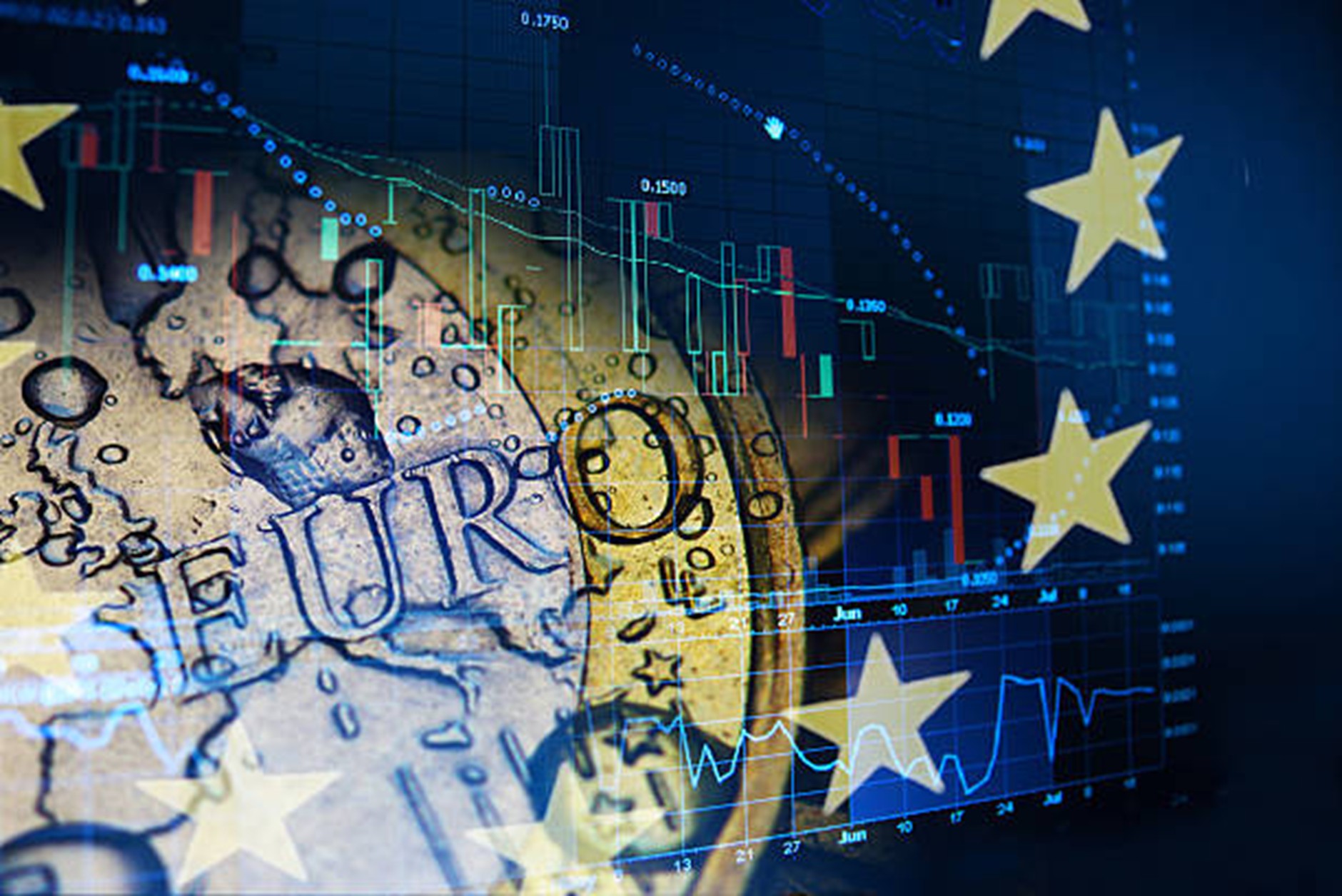

热门话题
特朗普如期投放了“关税威胁”,中国、加拿大和墨西哥已经首当其冲,欧元区瑟瑟发抖,俄乌冲突以来本就脆弱的欧洲经济和股市将再次受到冲击。明年欧元区经济下行风险还是较大,主要来自于美欧贸易摩擦以及欧元区经济复苏迟缓。宏观方面,截至2024年第三季度,美国实际GDP已达到2019年第四季度水平的111%,而欧元区仅为105%。纵向来看,欧元区的经济增速也显著低于自身长期均值,2000年至2024年第三季度,欧元区的实际GDP年均增速为1.3%,而2024年第三季度的同比增速仅为0.9%。根据欧盟统计的经济景气指数,在经历了完整的“复苏—扩张—下行—收缩”周期后,明年欧元区经济或步入新一轮的复苏与扩张阶段。尽管花旗欧洲经济意外指数表明经济环比动能有提升,但Eurocoin领先指数和欧元区经济景气指数反映出的市场信心低迷,整体复苏势头尚不明朗。

货币方面,在关税冲击和欧洲央行宽松政策的双重作用下,欧元兑美元或继续波动于 1.10-1.15 区间,走势主要取决于欧央行相对于美联储的降息预期做出的应对性调整。特朗普已经说的很明确了,想让利率更加宽松,也就是弱美元,但是最近他自己的言行就足够让美元维持强势,过激的关税可能还有通胀失控的风险,导致欧元走弱。目前市场上预计欧洲央行在12月份降息50个基点,但是如果美联储12月份硬刚特朗普不降息,欧洲央行降息25个基点是比较合理的,如果美联储12月份降息25个基点,欧洲央行降息50个基点,可能更加合适。
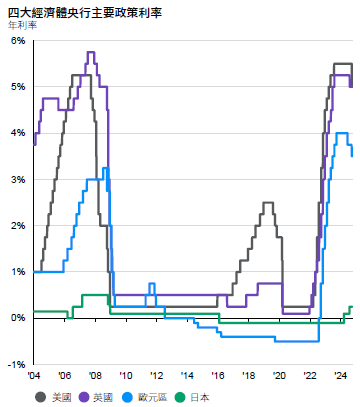
(Source: J.P. Morgan Asset Management)股市方面,当前仍维持美国一枝独秀的状态,欧洲、加拿大、英国等国家的GDP增速无法有效转化为公司盈利增速,所以股市回报率都不够有吸引力。过去几十年,欧洲和英国的主要指数因缺乏科技股、以及公共事业和资源板块权重过高的原因表现较弱。欧洲斯托克50指数整体市盈率(P/E)约为 15倍,虽然显著低于约21倍的美国标普500,但估值拐点未现,投资难度较高。
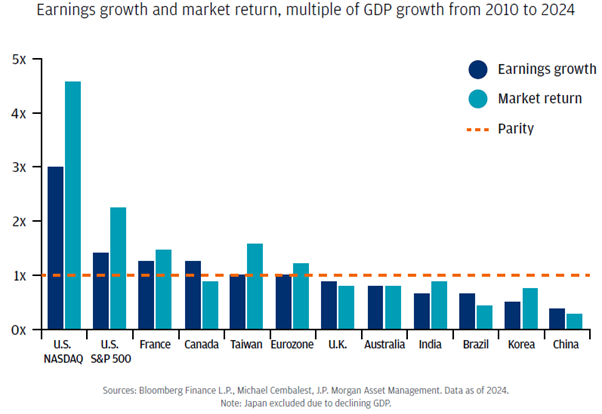
虽然我们说欧洲前景不佳,但是高盛的分析师还是给出了可以布局的板块:航空航天和国防军工。特朗普执政下的美国不会愿意继续保护欧洲和维持与欧洲的军事联盟,所以北约正在加大国防开支,这会利好军工板块。NATO欧盟成员中,有16个国家的国防支出今年将超过占GDP 2%的门槛,总额达到约3600亿欧元,而十年前这些国家的平均支出仅为GDP的1.2%。相关参考标的有:- 萨博公司(SAAB AB):这家瑞典公司在2022年股价上涨约80%,其防务产品在欧洲市场占有重要地位。- 莱昂纳多公司(Leonardo S.p.A.):意大利的莱昂纳多公司在俄乌冲突后,股价涨幅超过25%,显示出市场对其产品的需求增长。- 泰雷兹集团(Thales SA):受益于欧洲各国增加国防预算,这家法国公司在2022年股价上涨约60%。- MTU航空发动机公司(MTU Aero Engines AG):MTU的业务涵盖商用和军用航空发动机的开发、制造和维护,过去一年股价上涨了约65.23%,显示出强劲的增长势头。总体来看,欧元区整体经济低迷叠加特朗普关税威胁,欧洲有近虑更有远忧。降息能否拯救欧洲经济?我们认为,虽有望在明年开启修复,但财政紧缩和马上到来的贸易摩擦将令本就不富裕的欧洲经济雪上加霜。免责声明:GO Markets 分析师或外部发言人提供的信息基于其独立分析或个人经验。所表达的观点或交易风格仅代表其个人;并不代表 GO Markets 的观点或立场。联系方式:墨尔本 03 8658 0603悉尼 02 9188 0418中国地区(中文) 400 120 8537中国地区(英文) +248 4 671 903作者:Christine Li | GO Markets 墨尔本中文部
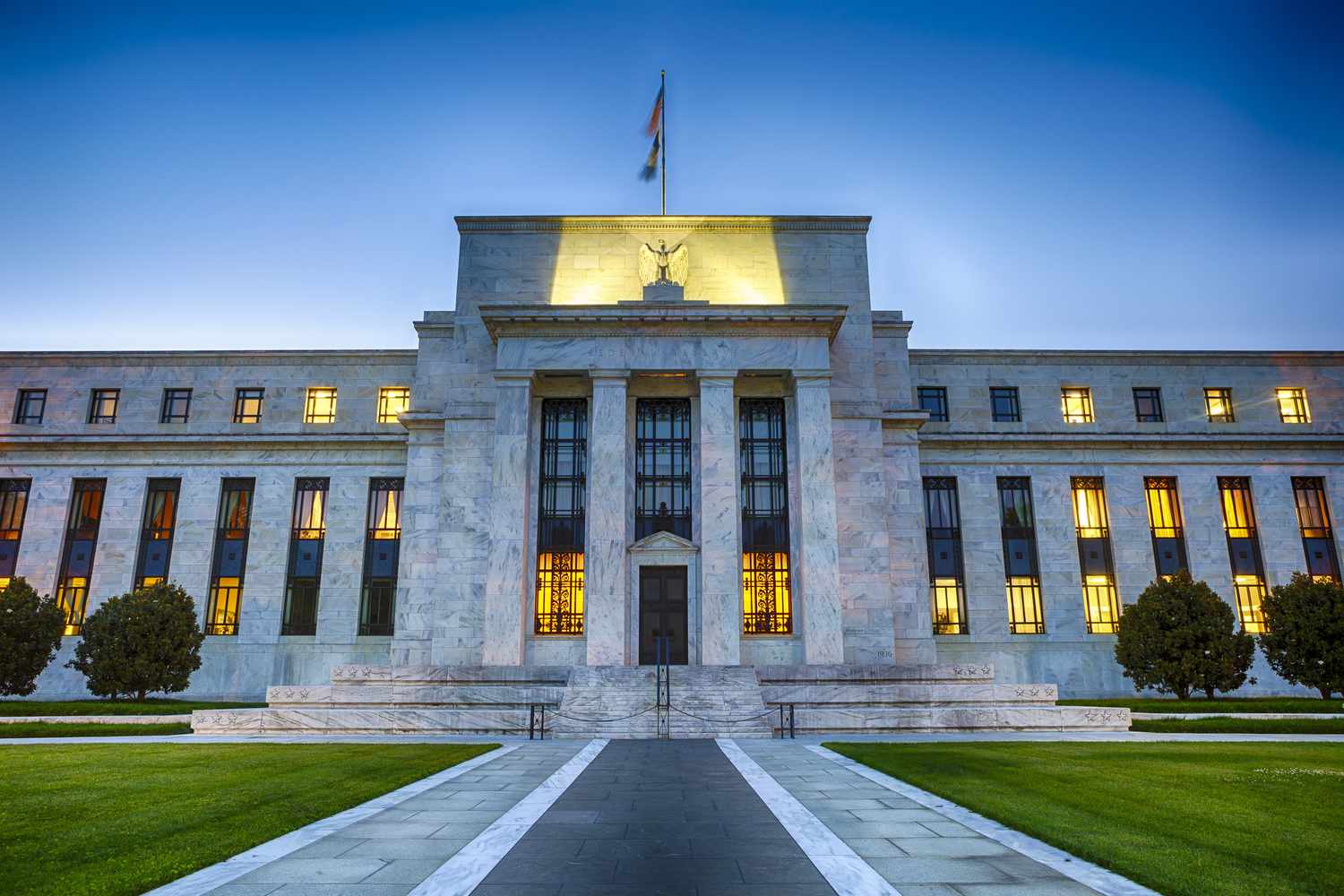

热门话题
今天我们来讨论一下每次开会都会造成市场“不小的波动”的美联储十一月的会议都讨论了一些什么话题,关于降息又有什么看法。那么根据十一月美联储的会议纪要显示,美联储预计未来会逐步降息甚至暂停降息。那么为什么会这样呢?美联储主席鲍威尔表示其实现在的经济并没有放出需要立马降息的讯号,所以一旦高通胀超出预期或者无法控制,美联储很有可能在十二月份的会议宣布暂停降息,那么今天我们就来讨论一下如果美联储真的在十二月份暂停降息,美国的债券和股票市场分别会有一个怎样的表现。

首先我们知道的是,如果真的暂停降息,不同市场对于美联储的政策解读会表现出分化。首先债券市场将暂停降息视作中性偏宽松的信号,而股市的走势可能会更加复杂,那么我们今天也会根据不同板块对股票市场的反应作出分类讨论。那么先讨论债券市场,一旦降息暂停或减缓,这代表市场表现出固定收益资产回报率可能会上升的信号,这就代表债券相对于股票来讲变得更加有吸引力,尤其是长期国债会吸引大量避险资金,反而言之,低评级债券和高风险资产投资的吸引力则会下降。股市方面,首先是成长股因对利率高度敏感,受益于利率高位的稳定性,尤其是科技板块。如果暂停降息可以顺利缓解通胀压力,那么市场对大型科技公司的增长潜力依旧充满期待。然而周期性股票和利率敏感行业比如银行或者房地产则相对没有那么利好。暂停降息对于这些行业来讲代表着短期内的融资成本不会显著下降,这也在很大程度上限制了这些板块股票的盈利能力。我们今天分场景探讨下,十二月份美联储决策可能会带来金融市场的影响,尤其是黄金和美元在这样的决策下会有怎样的趋势。首先如果美联储为了控制高通胀选择暂停降息,那么美元将会呈现出走强的趋势,但另一方面由于经济放缓的原因,避险资金又会流入黄金市场,那么黄金和美元可能又一次在短时间内携手上涨。
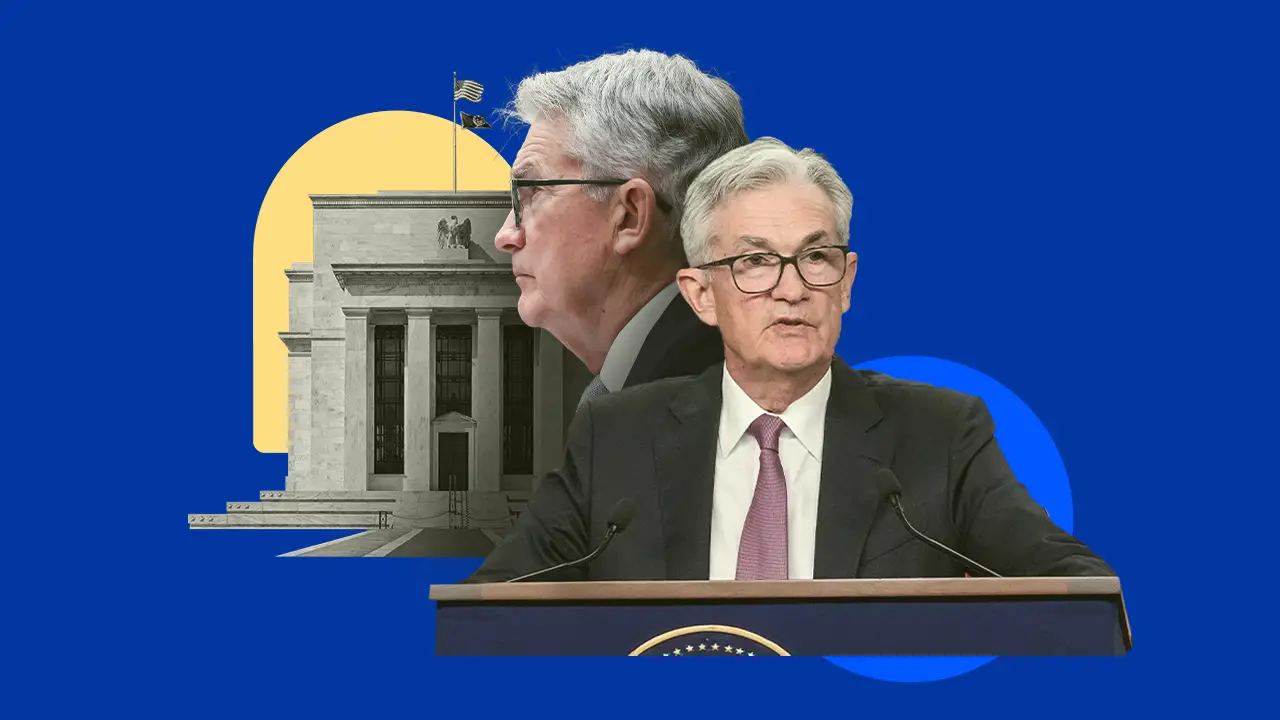
那么总结一下今天我们讨论到的几点:11月的美联储会议释放了12月会议可能会暂停降息的信号,那么债市和股市的分化将成为市场的主要特征,在这种环境下,作为投资者更需要根据个人的风险偏好和未来宏观经济预期做好及时的资产配置管理。债券市场的资金可能会更加青睐长期国债和高评级企业债券,而成长股或防御性版块,类似医疗和消费必需品会继续受益,但周期性和利率高敏感行业可能就面临分母端压力。包括黄金和美元携手上涨的局面都会是较好投资机会,当然我们也需要观察通胀和就业这些会主导美联储政策路径的数据,这些数据的发布往往是引导市场走势的关键。免责声明:GO Markets 分析师或外部发言人提供的信息基于其独立分析或个人经验。所表达的观点或交易风格仅代表其个人;并不代表 GO Markets 的观点或立场。联系方式:墨尔本 03 8658 0603悉尼 02 9188 0418中国地区(中文) 400 120 8537中国地区(英文) +248 4 671 903作者:Yoyo Ma | GO Markets 墨尔本中文部


热门话题
在过去多年时间里,几乎每年每个月都会有朋友和客户时不时都会问我一下:你觉得现在哪个产品买了赚钱,哪个公司未来可以翻倍。遇到这类问题,我都会很无语的回复,我真没这么大的本事,可以预测买了以后马上就上涨。我感觉,大家最希望的就是今天买了,明天翻倍,然后一等他们卖出以后,立即跌停,这样就无比开心。不得不说,如果屏幕前的你也是这么想的,那恭喜你,成为了一名合格的韭菜散户。在我过去十几年的证券行业职业生涯中,见过无数风光一时,但是最后一败涂地的例子。我深深知道我们行业内有一句俗话,叫做:金融行业不缺明星,缺寿星。今年你盈利200%,并不稀奇,但是如果你可以30年,每年30%,那你就是股神巴菲特。

而要实现一个长期的合理回报,首先要做到的,就是有一颗情绪稳定的平常心。大部分在股市里自己独立交易的朋友们的年纪平均是30-60岁。那么正常来说,您至少还有几十年的时光,既然这样,那我们应该追求的,是在未来相对长一段时间的稳定,合理回报。而不是在几个月,甚至几天,大赚一把后洗手不干。毕竟你又不是神仙,也没有这么好的命,就不要想不切实际的事。说回正题。今天我要说的就是,大部分朋友,或者大部分投资者,往往希望靠一个或几个股票代码来实现超级盈利,或者所谓的赚“大钱”。这样的想法有很大的问题。

在投资行业内,我们经常说,如果你看对了方向,那不论买什么,基本是就是赚多赚少的问题。但是如果你看错了大方向,那即使你找对了某一个产品,在总体投资上,也是亏多,还是亏少的问题。举个例子,在疫情之前,澳洲一度非常火爆的新兴产业就是一大批先买,后支付的公司,例如Afterpay, Zip, Latitude以及之后欧洲来的Klarna等等公司,曾经一度估值和股价都不断创出新高。但是我个人一起并不是非常看好,不仅仅是因为其盈利模式大部分来自于没有及时支付的利息罚款和其他费用。更重要的一点是,我本人从不看好一家公司不断亏钱,需要不断融资来维持运行这样的行业。短期可以,但是如果3年,4年依然不盈利,那只要融资跟不上,那随时会倒闭。即使不倒闭,其再融资也会使得其估值严重缩水。之后的事实证明,除了Afterpay侥幸在行业破碎之前被收购成功退市以外,其他几乎所有的先买后支付公司的股价都出现了超过70%以上的缩水。同样的情况也出现在很多非主流矿业公司里。很多锂矿,镍矿,铀矿等前几年的热门概念股,他们的估值都基于了需要保持高速增长的环境下实现。而一旦国家政策,或者电动车销量出现变化,例如今年的情况下,不论是锂矿还是铀矿,其股价都出现了腰斩。当然,如果你是高手,只做波段,那3个月50%的利润依然是非常诱人的。可90%的投资者并不是高手。大部分都是非金融领域的普通人,所以大家记住一句话,看准一个个股,太难了。倒不如判断一个更大的方向。例如,美国降息开始,并且未来1-2年都会是降息周期。例如,特朗普上台以后可能会希望制造业回归美国,希望美元强势,希望美股上涨。例如,日本的通胀正在逐步加速,可能未来非但不会降息,有可能会成为发达国家里唯一一个还需要降息的国家。例如,澳洲明年也将会降息,随着推动的就是消费和地产板块。而不论消费还是地产,最大,最直接的受益方,银行依然会牢牢占据一块。

像这样的大方向,其实会比在几千个股票里寻找几个成功盈利的难度要小的多。而这些大方向,也可以从新闻,从宏观政策里得到验证。其实我们做任何事,都需要知道自己擅长什么,不擅长什么。毕竟每个人不可能做到面面俱到,因此在投资这个事上,我们需要做的就是扬长避短。什么是长?就是我们在其他行业培养出来的耐心,决心,和信心。什么是短?就是我们希望自己在投资之后马上要赚钱的贪心,躁动,和一旦亏损之后的担忧。说到担忧,其实大部分时候,在某个产品上当亏损时你的担忧,其实本质上是来源于你对于这个产品,这个公司的不确定,不了解,没有足够的信心。所以其实我们在做任何一个决定时,尽量要选择让自己有信心的,自己了解的,自己知道的。而不要去选择朋友推荐的,内部消息的,或者别人偷偷告诉你,也让你不要告诉其他人的。这类投资,就算偶尔你赢一次,长期来看,亏损比例据对超过80%,还不如你自己扔硬币去买。所以,今天总结一下:1. 金融市场不缺明星,缺寿星。2. 看对方向,那是赚钱多少的问题。看错方向,那就是亏钱多少的问题。3. 任何人都无法做到面面俱到,如果你在其他领域非常有建树,那么按照上帝公平原则,很大概率你在投资上就会比别人有缺点,我们要尽量扬长避短,避开自己的性格缺陷。

说了那么多,总结我最喜欢的懒人五项:联邦银行,麦考理银行,好人集团(goodman group),澳洲纳斯达克指数基金,澳洲美国标普500指数基金。以上5个产品,可以基本让你免去了频繁换仓的烦恼。属于一劳永逸的组合。可能唯一的不足是,最近都是新高,如果可以找个短期回调的时候进场,会更加理想。必和必拓由于最大买家最近几年比较拮据,已经不是本人最爱之一了。免责声明:GO Markets 分析师或外部发言人提供的信息基于其独立分析或个人经验。所表达的观点或交易风格仅代表其个人;并不代表 GO Markets 的观点或立场。联系方式:墨尔本 03 8658 0603悉尼 02 9188 0418中国地区(中文) 400 120 8537中国地区(英文) +248 4 671 903作者:Mike Huang | GO Markets 销售总监

